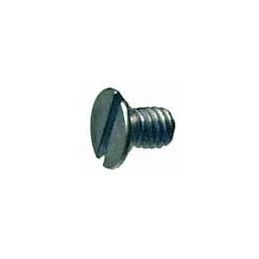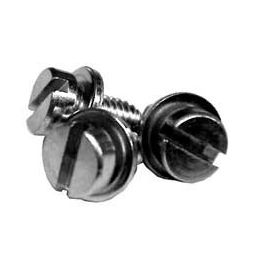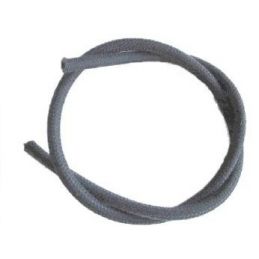Last month we talked about pressure plates so I think it's only fitting to talk about the throw out bearing arm. Here I’m going to walk you through some common issues, and what to look for when replacing them. There are basically two styles, well three if you want to count the large shaft ones on 73 and later transmissions and I guess you can count the split case ones too. I am going to focus on the syncro style transmission arms.
You have the first one, up to 1970. This is the one that takes the throw out bearing that has the two separate clips that are a pain to put on. Then you have the later one, 1971 on. This takes the throw out bearing that rides on a centering guide and the clips are part of the bearing. Bugs, ghias, things, type 3s and buses up to 1967 all take the same length shaft. Late buses 1968 on take a longer shaft. What I am going to explain applies to all. So how many of you have had one of the arms break that holds the throw out bearing? I am betting most of you, me included. One of the other common problems is the inside snap ring slides off and the shaft moves over and yeah, more carnage. So in this article I will explain a few tricks and a few things to look out for.
So if you look at the stock shaft you will see how the arms for the bearing are just kind of spot welded to the shaft. That’s ok for a stock pressure plate I guess, not my favorite. If you look at a good aftermarket shaft the arm that holds the throw out bearing has a hole in it that the shaft goes through and then is welded all the way around it- NICE. This has way less chance of breaking than the stock arm.
You have had the aftermarket ones and have had problems? Some of them out there have fixed the arm breaking off problem but have other problems made into them. This is what I have seen. The arms that hold the throw out bearing are not welded on right. In other words, the pivot of the bearing should be parallel with the shaft. If they aren’t, the throw out bearing hits the pressure plate at an angle and when you push to release the clutch then the bearing will put load on one side. Not good. Here is a quick way to check to see that it was made right. Lay a six inch-ish dowel of some kind in the throw out bearing pivot section of the shaft. Now lay the shaft on the table. Is the shaft parallel to the dowel? In other words you should be able to lookdown your dowel and it should line up with the shaft. If one or the other is at an angle you should be getting a new arm and returning that one to the trash can. Number two problem I have seen is the clip groove is not cut deep enough. That’s a tough one to judge and what is correct? Well, I don’t worry about this one too much because I make a sleeve that goes on the arm between one of the arms and the clip. A piece of conduit works pretty good. Put the clip on the shaft then measure between the clip in the arm. Cut a piece of conduit and slide it up against the arm. Now if the clip groove is cut too shallow guess what the clip has nowhere to go. It has to stay in the groove. Next always check the fit of the clutch cable arm to the shaft. A lot of times the splines need some work to get them to fit right. Small file time.
Can’t even get yours out of the trans? Damn Germans. Hans did make this area of the car kinda of tricky so here is how you get your old one out. Start by removing the 11mm head bolt that sets the arm bushing into the trans case. Next, take off the throw out bearing and the clutch cable nut. Push the shaft towards the cable arm, pushing out the bushing. Awh I didn’t say take off the inner clip. That clip is what is going to push the bushing out. Hans you tricky kraut. Remove the cable arm, spring bell and bushing. Now at this point, the shaft should pull out from the inside. That’s it.
Let's put the new one in. Did you make that spacer I was talking about? You don’t have to, but it's cheap insurance. Do you have a good shaft? One you can trust that won’t break? Do you have a good bushing? I prefer either the brass or urethane ones. If yours is the plastic one yeah I would throw it in the neighbor's yard and get a good one. Ok we have all good parts, let's get this back in. Get out your white grease and start by putting some in the bushing that is next to the starter hole. Then grab the shaft and put some white grease where the bushing rides. Your spacer, if you're going to run one, and your inner clip should already be on the shaft. Now slide the arm into the trans from the inside. Next take your good bushing and slide it over the shaft and into the trans paying close attention to the locating hole in the side. It has to line up with that bolt we took out earlier. Once it’s in, take a flashlight and look down the hole the location bolt goes into. If the trans is in the car use a mirror. The end of the bolt has to fit in that hole. If it doesn’t you will crush the bushing onto the shaft and it won't work right. Once you have it lined up thread the bolt in. Snug the bolt. Grab the shaft by one of the arms. Does it operate nicely? If it does on to the next step. If it doesn’t take it all apart and find out why. It's usually the bushing not being lined up right or if they gave you a new bolt with your aftermarket arm it could be too long. Grind the end down or throw it in the neighbor's yard and use the stock bolt. Next, slide the bell over the shaft, then the spring. Now the arm. Don’t worry about the spring being on the cable arm yet. Install the clip that holds the cable arm on. At this point put your throw out bearing on. Make sure you use a little white grease on where it pivots. It’s a lot easier to put the throw bearing on now without the tension of the clutch return spring. Now the trick of the day. Take a large phillips screw driver and wrap it around the cable arm. Stick the end of the screwdriver in the hook of the spring. Pull back on the screw driver and it wraps the spring around the arm. Pull the screwdriver out and wa la, it's on. Put some anti-sieze on your clutch cable threads and start the nut on the cable. Leave it loose. It’s a lot easier to tighten the nut once the motor is in then to loosen it when it's too tight. What I mean is, I have guessed at where the nut should be on the cable only to find out it was too tight and now the throw out bearing is hitting the pressure plate. Not only do I have to overcome the tension of the spring, but now I have to overcome the tension of the pressure plate. On big pressure plates, I have had to loosen the motor back up to relieve the tension so I could adjust the nut.
So that’s it. I hope that helped. So many times I have had customers or even myself put a motor in only to have to pull it back out because of throw out bearing shaft problems. These tricks should help. I am sorry I didn’t go into the years and different style shafts too much, but what we talked about works on all of them.







